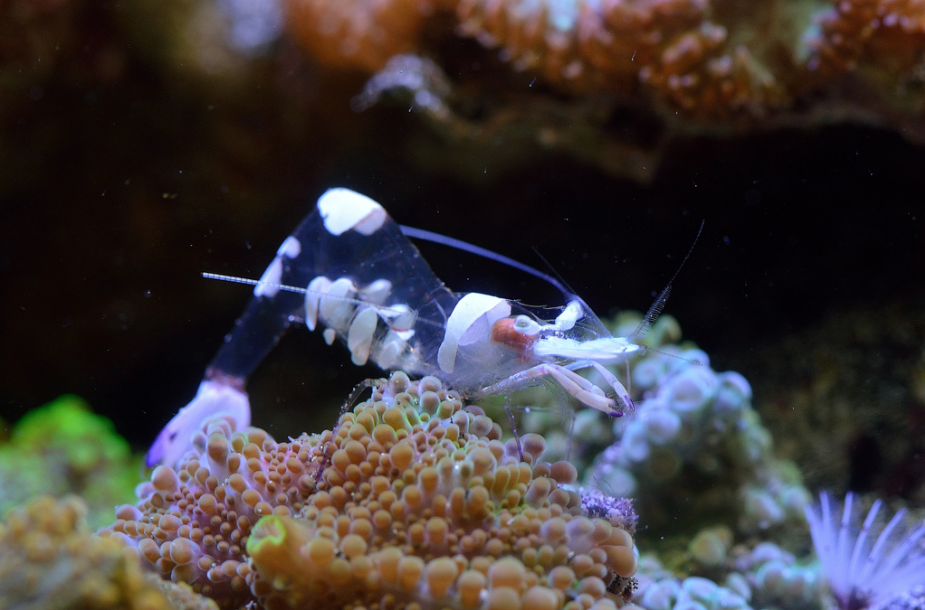There are more than just skunk cleaner shrimps and blood shrimps in the world of aquarium crustaceans. Many are delightful and colorful little creatures that go unnoticed even to the trained reefer. It is imperative that a reef tank should include some crustacean life to add another dimension of “liveliness” and commotion on a micro scale. Rocks and coral coming alive with the waving of long antennae and colorful glimpses of that elusive shrimp perhaps. In this mini series, we’ll be introducing to you some really neat shrimps to add a little pizzaz to your reef tank.
Apart from the ubiquitous shrimps of the cleaning variety, one can consider the illustrious and highly amusing commensal coral shrimps belonging to the genus Periclimenes. There are tons, of all sorts, and most are commensal creatures that live on corals, anemones and various echinoderms. The easiest and the most alluring are those that live on corals and anemones. The first of three being highlighted today is P. magnificus, a beautiful shrimp with ornate white markings on a transparent body.

P. magnificus, although largely transparent, bears striking markings on the body and head. It’s antennal scale is large and colored white with a tinge of blue. Both eyes are white and joined by a band, giving it a masked appearance. Like most other in its genus, P. magnificus spends much of its time sitting on the coral or anemone of its choice. They do occasionally provide cleaning services, and advertise by dancing and shaking their bodies in a comical and flamboyant fashion.
Yet another similarly colored species is P. venustus. P. venustus shares the same superficial markings with many other species such as P. holthuisi. Like the rest, they live on corals, and in the wild are often associated with Euphyllia and various other large polyped stony corals. As with the rest, they do not move much and spend much of their lives perched on the favorite coral, waving and dancing around.

P. venustus may sometimes be called “clapping shrimps” for an unusual behaviour that they occasionally display. Apart from the swaying and dancing behavior, these shrimps occasionally wave their claws in a clapping fashion. A sight totally delightful to see. Care for these shrimps are easy and they do not require specific feeding. They eat scraps and whatever fish food they can get their claws on. Another gorgeous species to consider is P. pedersoni, which boasts a beautiful purple spotted stripe along its back.

Maybe the most common species has got to be P. brevicarpalis. This species is slightly more robust in built and is more sombre in behavior. They do not dance, nor do they clap, but they are just as pretty. The tail margins are decorated with orange spots aside from the normal white blotches. The genus Periclimenes may be large and confusing, but a few species such as these are highly suited for the coral tank. A little movement and commensalism on your corals can add a more natural feel and touch, without compromising much on cash. These shrimps are not overly expensive and are relatively easy to find.



